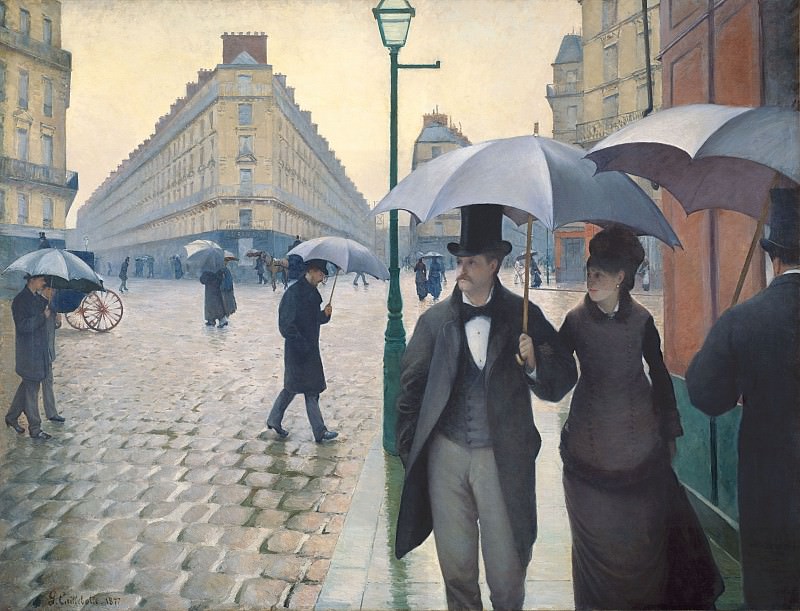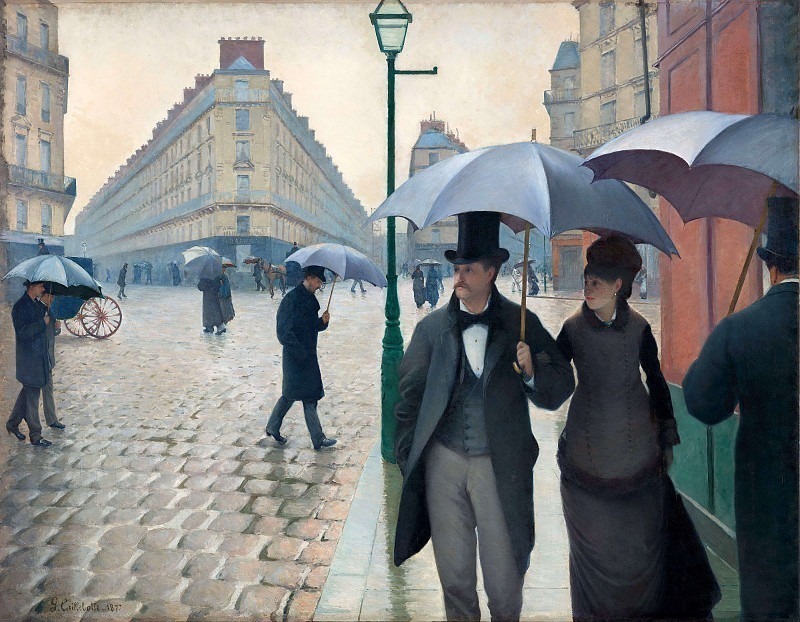

Gustave Caillebotte – Paris street, Rainy Day
1877
На эту операцию может потребоваться несколько секунд.
Информация появится в новом окне,
если открытие новых окон не запрещено в настройках вашего браузера.
Для работы с коллекциями – пожалуйста, войдите в аккаунт (open in new window).
Поделиться ссылкой в соцсетях:
You cannot comment Why?
Several other figures are scattered across the scene, some with umbrellas, others hurrying along. A horse-drawn carriage is visible in the middle ground, adding to the sense of urban activity. The architecture of the buildings is distinctly Haussmannian, characterized by their mansard roofs and repetitive facades, suggesting the modernizing influence of Baron Haussmann on Paris.
The subtexts of the painting are rich and multilayered. Caillebotte captures the anonymity and isolation that can exist within a crowded city. The figures, despite being in close proximity, appear disconnected from one another, each enclosed in their own space, further emphasized by the umbrellas that act as personal shields from the elements and from each other.
The painting can be interpreted as a commentary on urban life in late 19th-century Paris, a period of rapid industrialization and social change. The emphasis on modern dress, the grand boulevards, and the sense of everyday routine suggest themes of modernity, bourgeois society, and the experience of navigating a rapidly evolving urban landscape. The subdued color palette and the damp atmosphere contribute to a sense of melancholic realism, hinting at the less romanticized aspects of city living despite the outward signs of prosperity. The central couple, while appearing elegant, also convey a certain stoicism, facing the indifferent weather and the anonymous crowd.